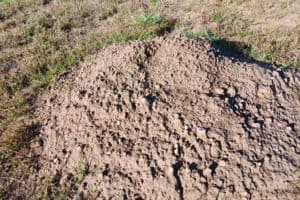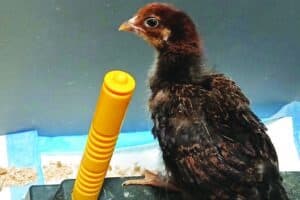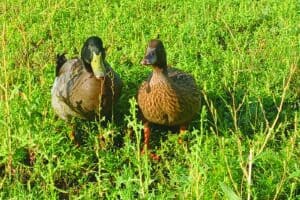On the community hub Nextdoor, a recent discussion on prairie dogs caught my attention.It began with a post by a person seeking someone with ìa prairie dog problemî who would welcome that personís father and his friends onto their property to shoot the prairie dogs. There was a person or two who decried that idea as barbaric, but there were a lot more people who said sure, come on over; and complained about the damage prairie dogs had caused. One lamented their property has become unsafe for their horses.I had heard about the danger that prairie dog holes can pose to horses and livestock. Just in the last year or so, it seems, prairie dogs have set up a colony at a ranch about a mile and a half from us, and I would not welcome the idea of them annexing our land, too.Prairie dogs can also pose a threat to human health in the form of the plague. Plague is caused by bacteria that can be spread to people and pets by the bites of infected fleas or by direct contact with infected animals, according to El Paso County Public Health; and it is frequently detected in prairie dogs, as well as squirrels, rabbits, chipmunks and other rodents.Still, if you look at the prairie dog as only a threat or a nuisance ó and, indeed, they are listed as ìa nuisance wildlife speciesî ó youíre not looking at the good they do. Because they are also listed as a ìkeystoneî species, meaning, according to the Colorado Parks and Wildlife website, ìthey are a species upon which other animals depend, and that removal of these species from the ecosystem would cause changes to ecosystem function. Prairie dogs are prey for species like the endangered black-footed ferret, ferruginous hawks, badgers and bobcats.îAnd while the holes they dig could cause a horse or cow to break a leg, those burrows also ìprovide escape structure, nests and dens for species like burrowing owls, kit and swift fox, small mammals and reptiles. They till and aerate the soil, help spread seeds, and alert other species to potential predators.îBottom line, prairie dogs can be ìa touchy subject,î said Aaron Berscheid, a district wildlife officer for Colorado Parks and Wildlife ñ and, of course, a fellow New Falcon Herald columnist. CPW is charged with the management of prairie dogs in the state, which entails making it possible for landowners to limit damage to their property and livestock while also promoting healthy populations of prairie dogs ìto bolster a balanced ecosystem,î Berscheid said. To that end, wildlife health and research teams have worked to develop a plague vaccine for prairie dogs; Berscheid said the vaccine is being used to treat prairie dog populations where black-footed ferrets are going to be released or have been released; prairie dogs are the main part of the endangered ferretís diet in the wild.On the other side of the coin, there is actually a prairie dog hunting season, from June 15 to the end of February, for folks who have a small game license and are hunting on public lands. The season for private lands is year-round.And since, as mentioned, prairie dogs are listed as a nuisance species, ìA landowner can shoot them on his property whenever without a license,î Berscheid explained. That also applies to anyone he invites onto his property to help with a prairie dog problem.ìLandowners can also use pesticides to control prairie dog populations,î Berscheid said. ìThere are some ëover the counterí pesticides that you can find at places like Big R that don’t require special licensing to use and other products that do require licensing from the Environmental Protection Agency.îAt the same time, though, there is that role of the prairie dog as a keystone species, such as providing habitat for burrowing owls, which are a state-threatened species. So caution must be taken to avoid ìcollateral predator/scavenger exposure to pesticides,î Berscheid.ìWe†have guidelines suggesting they wait until the owls migrate out during winter. And we recommend they†conduct burrowing owl†clearance surveys prior to any ground disturbing activity or poisoning of the colony.îLandowners seeking a less-lethal option can also choose to relocate prairie dogs, but a permit is required and certain regulations must be followed, Berscheid said.The good news ó well, for the prairie dogs anyway and for those 123 other species that depend on them in one way or another ó is that prairie dog populations ìare doing quite well in Colorado,î Berscheid said. ìThey have ups and downs in populations, just like any species, but overall they are doing very well in numbers.ìThe biggest threat to prairie dog populations is habitat loss. This would include development†around population centers on the Front Range, like the Falcon area. But, even with this development, prairie dogs are a pretty†hardy species and are not in danger of population decline, currently.î






